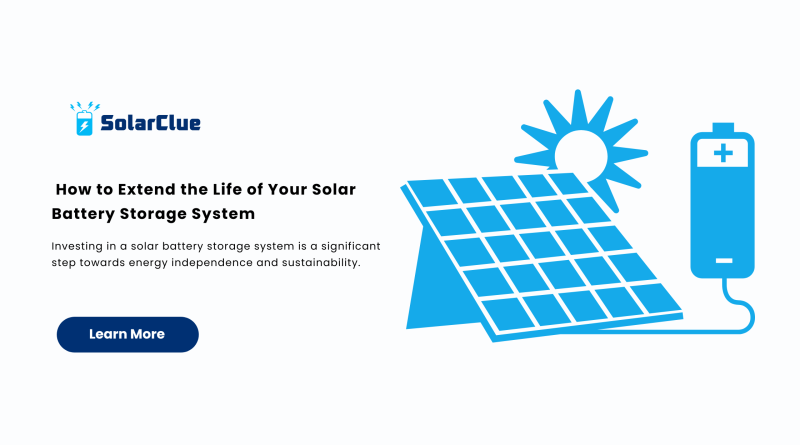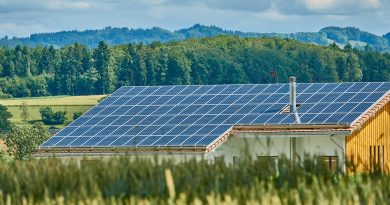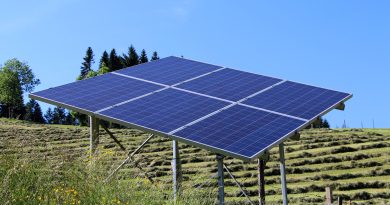How to Extend the Life of Your Solar Battery Storage System
Investing in a solar battery storage system is a significant step towards energy independence and sustainability. However, ensuring that your solar battery lasts as long as possible is crucial to getting the best return on your investment. By following proper maintenance and usage guidelines, you can maximize solar panel efficiency and extend the lifespan of your home solar battery system. Let’s explore the best ways to keep your solar power system running efficiently for years to come.
Table of Contents
- 1 1. Choose the Right Solar Battery Type
- 2 2. Maintain Optimal Charging and Discharging Levels
- 3 3. Keep Your Battery at a Stable Temperature
- 4 4. Regularly Monitor and Maintain Your Solar Battery
- 5 5. Optimize Energy Consumption
- 6 6. Invest in a High-Quality Solar Power Inverter
- 7 7. Consider Adding Battery Storage to Solar System
- 8 8. Protect Your Solar Battery from Overloads and Surges
- 9 9. Understand Solar Power Systems with Battery Storage Price
- 10 10. Keep Your Solar Panels in Top Condition
- 11 11. Upgrade to a Smart Energy Management System
- 12 12. Know When to Replace Your Solar Battery
- 13 Conclusion
- 14 Frequently Asked Questions (FAQs)
1. Choose the Right Solar Battery Type
Not all solar batteries for home are created equal. The most common types include:
1. Lithium-ion batteries – High efficiency, longer lifespan, and low maintenance.
2. Lead-acid batteries – More affordable but require regular maintenance and have a shorter lifespan.
3. Flow batteries – Ideal for large-scale storage but come at a higher solar battery price.
Selecting the right battery for solar system based on your energy needs will contribute to a longer-lasting and more efficient system.
2. Maintain Optimal Charging and Discharging Levels
Overcharging and deep discharging can significantly degrade your solar battery storage system. To avoid premature wear:
1. Keep the battery charge within 20%-80% capacity.
2. Utilize a solar power inverter for home with built-in battery management features.
3. Install a charge controller to regulate energy flow from your solar panels to the battery.
3. Keep Your Battery at a Stable Temperature
Extreme temperatures can negatively impact solar power storage. The ideal temperature range for most solar battery storage systems is between 15°C to 25°C (59°F to 77°F). Consider these steps:
1. Install the battery in a shaded, well-ventilated area.
2. Avoid placing it near heat sources or in freezing environments.
3. Use insulation or cooling systems to maintain a stable temperature.
4. Regularly Monitor and Maintain Your Solar Battery
Routine inspections help ensure optimal performance. Essential maintenance tasks include:
1. Checking the battery voltage and state of charge.
2. Cleaning battery terminals to prevent corrosion.
3. Updating the software of your solar power inverter for better efficiency.
5. Optimize Energy Consumption
Using energy efficiently can reduce battery strain and enhance its longevity. Tips include:
1. Running high-energy appliances during peak solar power generation hours.
2. Using energy-efficient appliances to reduce overall consumption.
3. Setting up automated energy management systems for better control.
6. Invest in a High-Quality Solar Power Inverter
A solar power inverter price may vary, but investing in a high-quality model can make a huge difference in battery efficiency and lifespan. Look for inverters with:
Advanced battery management systems.
High conversion efficiency to reduce energy loss.
Remote monitoring features for real-time diagnostics.
7. Consider Adding Battery Storage to Solar System
If you are thinking about adding battery storage to solar system, ensure it integrates seamlessly with your existing setup. Upgrading your battery storage can:
1. Provide additional backup power during outages.
2. Improve overall solar panel efficiency.
3. Increase energy independence by storing more excess power.
8. Protect Your Solar Battery from Overloads and Surges
Electrical surges and overloads can damage your solar battery storage system. To safeguard your system:
1. Install surge protectors and circuit breakers.
2. Use a solar power inverter with built-in protective features.
3. Ensure proper grounding of all components.
9. Understand Solar Power Systems with Battery Storage Price
The solar power systems with battery storage price depends on the quality and capacity of the components used. Investing in a reliable and efficient solar battery may seem expensive initially, but it leads to better performance and longer lifespan, saving money in the long run.
10. Keep Your Solar Panels in Top Condition
While focusing on battery maintenance, don’t overlook solar panel efficiency. Clean and well-maintained solar panels ensure more energy is available for storage. Here’s how to keep them in top shape:
1. Clean panels regularly to remove dust and debris.
2. Trim nearby trees to prevent shading.
3. Check for cracks or damages and repair them promptly.
11. Upgrade to a Smart Energy Management System
Using a smart energy management system allows you to:
1. Monitor energy usage and adjust consumption accordingly.
2. Optimize battery charging cycles.
3. Receive alerts on maintenance needs, preventing unexpected failures.
12. Know When to Replace Your Solar Battery
Even with the best care, solar batteries for home will eventually degrade. Signs that indicate it’s time for a replacement include:
1. Significant drop in energy storage capacity.
2. Increased charging and discharging times.
3. Frequent system shutdowns or errors.
Conclusion
A well-maintained solar battery storage system ensures long-term reliability and cost savings. By following these best practices—choosing the right battery, maintaining optimal charging levels, protecting against extreme temperatures, and investing in a quality solar power inverter for home—you can extend the lifespan of your home solar battery system and maximize the benefits of your solar power system. Looking for high-quality solar solutions? Visit our website today to explore the best solar battery options for your home!
Frequently Asked Questions (FAQs)
1. How long does a solar battery storage system last?
Most solar battery storage systems last between 10-15 years, depending on usage, maintenance, and battery type.
2. What is the best temperature for a solar battery?
The ideal temperature for a solar battery is between 15°C to 25°C (59°F to 77°F). Extreme temperatures can reduce battery efficiency and lifespan.
3. How much does a solar power inverter for home cost?
The solar power inverter price varies based on capacity and features. High-quality inverters range from $1,000 to $3,000.
4. Can I add battery storage to an existing solar system?
Yes! Adding battery storage to solar system is possible, but compatibility and proper integration are essential for efficiency.
5. How do I know if my solar battery needs replacing?
Signs include reduced storage capacity, longer charging times, and frequent power interruptions.
By following these essential tips, you can enjoy uninterrupted, efficient, and long-lasting solar power for your home.



